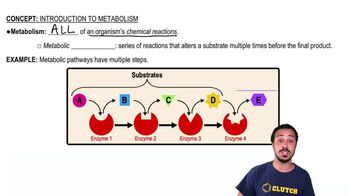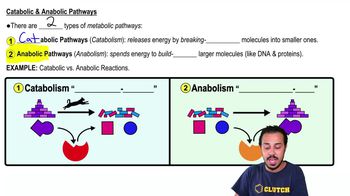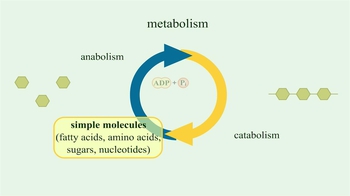7. Energy and Metabolism
Introduction to Metabolism
7. Energy and Metabolism
Introduction to Metabolism
Additional 4 creators.
Learn with other creators
Showing 7 of 7 videos
Practice this topic
- Multiple Choice
Which of the following terms specifically describes the metabolic process of breaking down large molecules?
a) Catabolism.
b) Metabolism.
c) Anabolism.
d) Dehydration.
- Multiple Choice
Which of the following statements is TRUE regarding anabolic pathways?
a) They are used for digesting sugars.
b) They consume energy to build up polymers from monomers.
c) They release energy by breaking down polymers into monomers.
d) They increase the entropy of the organism.
- Multiple ChoiceWhich of the following correctly states the relationship between anabolic and catabolic pathways?
- Multiple ChoiceMetabolic pathways in cells are typically far from equilibrium. Which of the following processes tend(s) to keep these pathways away from equilibrium?
- Open QuestionChoose the pair of terms that correctly completes this sentence: Catabolism is to anabolism as is to .a. exergonic; spontaneousb. exergonic; endergonicc. free energy; entropyd. work; energy
- Open QuestionWhich of the following metabolic processes can occur without a net influx of energy from some other process?a. ⓅADP+Ⓟi→ATP+H2Ob. C6H12O6+6O2→6CO2+6H2Oc. 6CO2+6H2O→C6H12O6+6O2d. Aminoacids→Protein
- Open QuestionExplain how your body can convert excess carbohydrates in the diet to fats. Can excess carbohydrates be converted to protein? What else must be supplied?
- Open QuestionAn average adult human requires 2,200 kcal of energy per day. Suppose your diet provides an average of 2,300 kcal per day. How many hours per week would you have to walk to burn off the extra calories? Swim? Run? (See Figure 6.4.)









